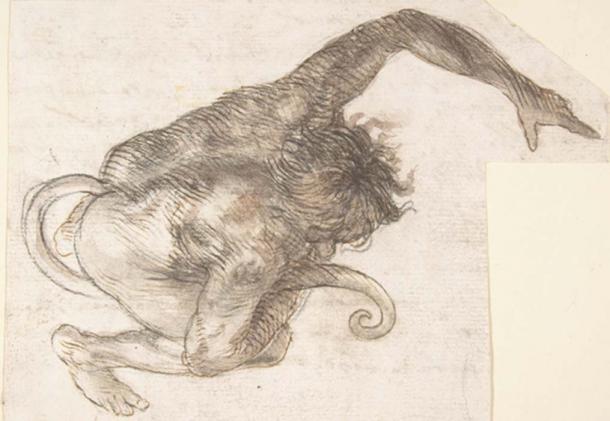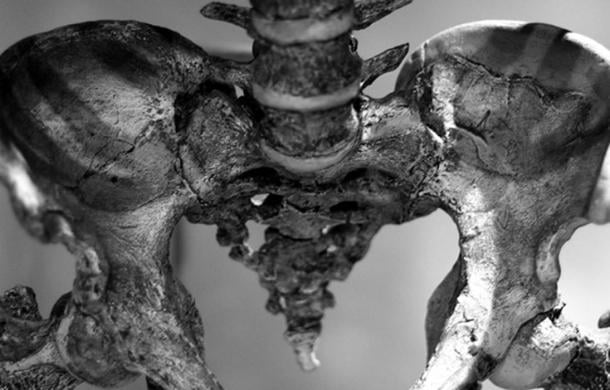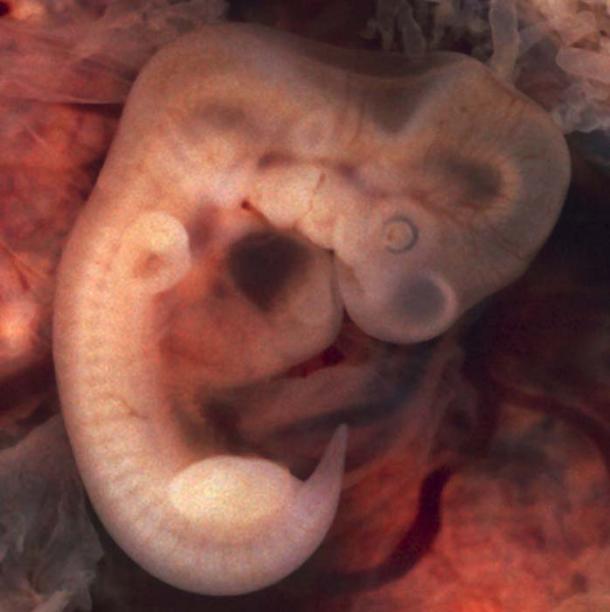Toroid
Founding Member
New Human Ancestor Species Discovered… And it had a Tail!
A multi-disciplinary and multi-national team of archaeologists, anthropologists and geneticists in Siberia have announced the sensational discovery of a new hominid species that interbred with our own species, Homo sapiens, leaving genetic traces that can be seen in living people today spanning the Ukraine and Russia and down through Mongolia, Korea, and China. The most shocking aspect of the finding is that this species had a visible tail, an archaic remnant of its evolution from primates millions of years ago.
The discovery was announced by British paleoanthropologist John Bennett on 1st April, who stated “This could be the most significant discovery in human origins research in 100 years!”
Scientists found fragments of bone deep in a cave in Siberia in April of last year, including parts of the pelvic bone, tailbone, a femur, and a lower jaw fragment. They first believed the fossils belonged to early Modern Humans dating back approximately 50,000 years, as Homo sapiens are known to have inhabited the same area around that time. However, DNA analysis revealed that the bones belonged to a distinct species, which has now been named Homo apriliensis after the month in which it was first found.

An illustration depicting a human-like creature with a tail (public domain)
Human Ancestors with a Tail
The new species also showed traces of DNA from Denisovans and Homo sapiens indicating that the three species had interbred at some point.
But the most shocking aspect of the discovery is that experts have determined that Homo apriliensis would have had a small visible tail, an example of vestigiality in which a species carries traits that have lost all or most of their original function through evolution.
“Although structures called vestigial often appear functionless, a vestigial structure like a tail might still retain lesser functions or develop minor new ones,” Dr Bennett explained.
Modern humans have many vestigial traits such as wisdom teeth and the appendix. The coccyx or tailbone is also an example of vestigiality and is the remnant of a lost tail.

The human coccyx or ‘tailbone’ ( pinkcigarette / Flickr)
All mammals have a tail at some point in their development. In humans, embryos have a tail for about four weeks, which measures about one-sixth of the size of the embryo itself. As the embryo develops into a fetus, the tail is absorbed by the growing body but the coccyx, or tailbone, remains. The tailbone has lost its original function in Homo sapiens in assisting balance and mobility, though it still serves some secondary functions, such as being an attachment point for muscles.
- How (Most) Humans Lost Their Tails - From Fish to Tetrapods to Apes to Homo Sapiens
- Extinct Denisovans from Siberia Made Stunning Jewelry. Did They Also Discover Australia?
- First Ever Skull Fragments of Denisovans Have Been Confirmed Found in Russia

Human embryos have tails for approximately 4 weeks in the developmental process ( public domain )
However, in the case of Homo apriliensis , the developing fetus would have retained a small tail that protruded externally and remained visible after birth. Scientists have called it a vestigial feature as they do not believe the tail served a role in balance or mobility, given its short length.
“This is the first time ever that an archaic hominid species has been found exhibiting an external tail. It is unprecedented and completely changes what we know about human evolution,” said Mr Bennett.
Research on the new species is still in the very early stages, but the multi-disciplinary team plans to release their next stage of results, which involves determining how recently the species went extinct, on 1st April next year.
Top image: Prehistoric hominid species (Andrea Izzotti / Adobe Stock).
By Joanna Gillan
